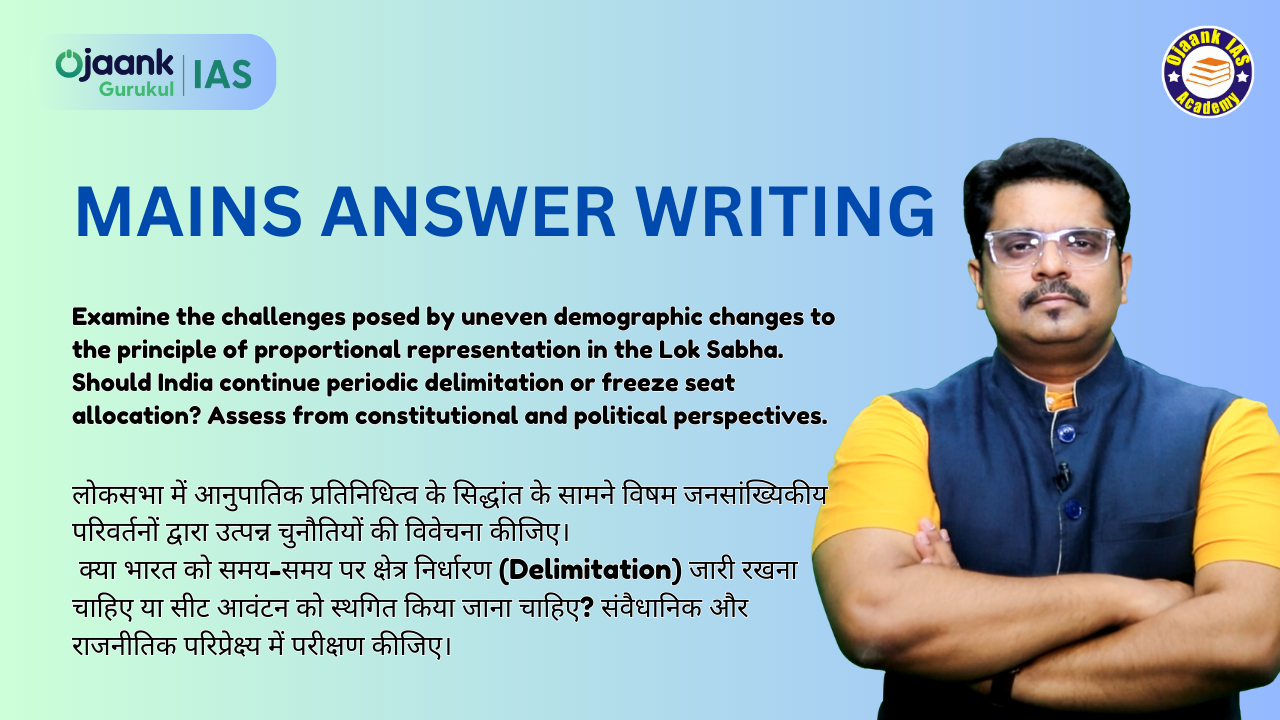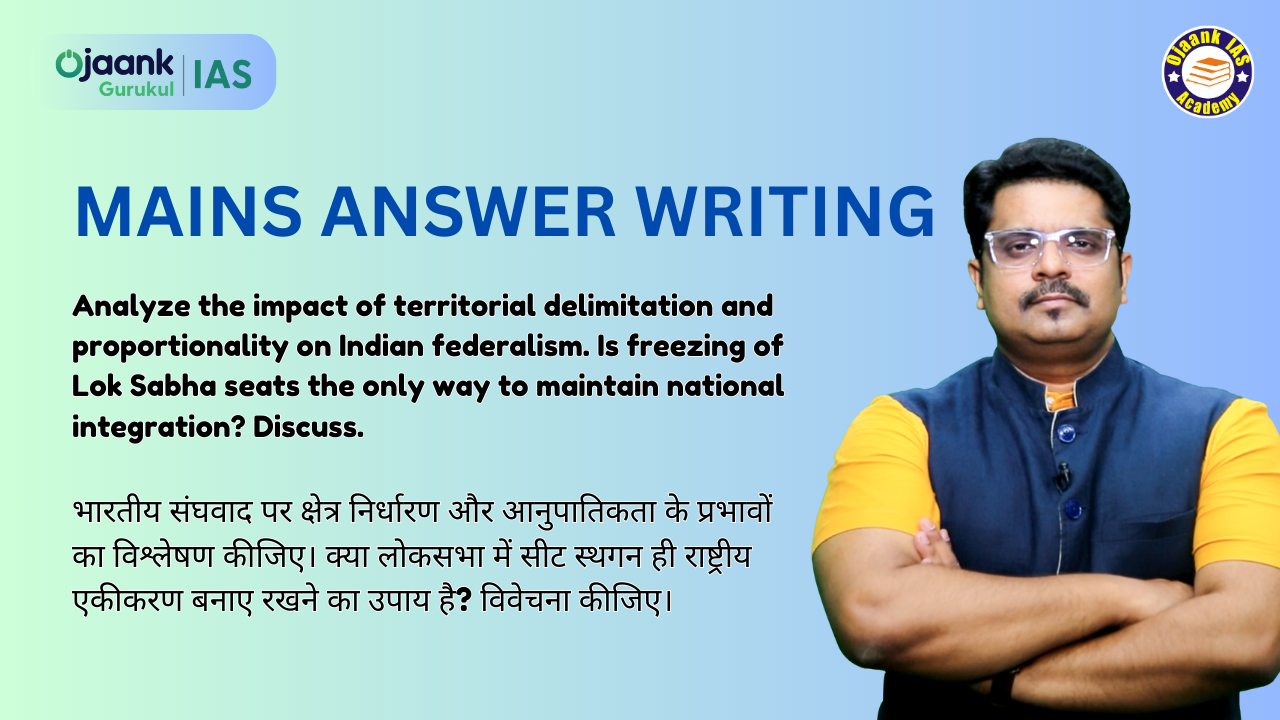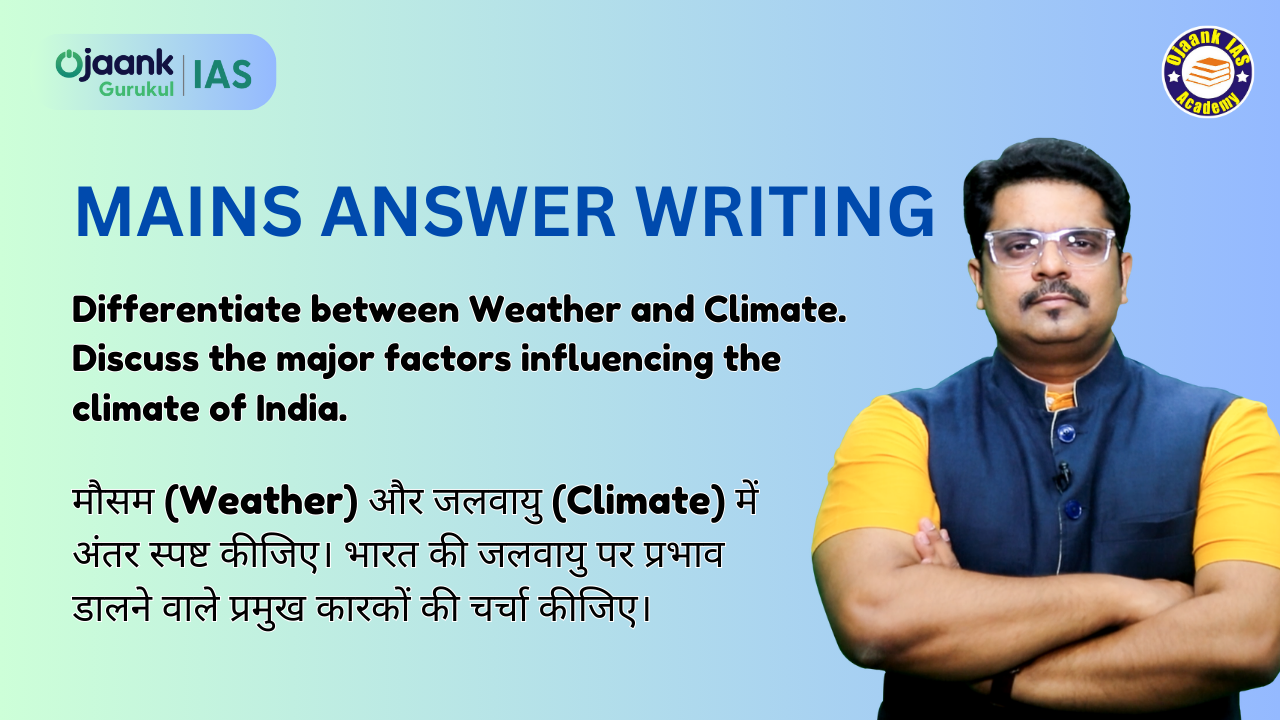Examine the challenges posed by uneven demographic changes to the principle of proportional representation in the Lok Sabha. Should India continue periodic delimitation or freeze seat allocation? Assess from constitutional and political perspectives.

Introduction:
In Indian democracy, the allocation of Lok Sabha seats is governed by Article 81, which mandates that representation be proportional to the population of states. However, uneven population growth across states has made this system increasingly contentious.
Imbalance Due to Uneven Population Growth:
1. North vs South India:
-
Between 1971–2011, population growth was:
-
Uttar Pradesh: 38.2%
-
Bihar: 25%
-
Madhya Pradesh: 28%
-
-
In contrast:
-
Tamil Nadu: 20%
-
Kerala: 15.5%
-
2. Disproportionate Representation:
-
Goa (1.5 million) has 2 Lok Sabha seats, while
-
Delhi (33.8 million) has only 7 seats.
-
Southern states face political loss despite success in population control.
Constitutional and Legislative Responses:
-
42nd Constitutional Amendment (1976):
Froze delimitation till 2001. -
84th Amendment (2002):
Extended the freeze till 2026. -
Article 82 & Delimitation Act, 2002:
Mandates seat reallocation after every census, though implementation is currently deferred.
Way Forward:
1. Beyond Numbers:
Seat allocation should also consider:
-
Geographical area
-
Administrative efficiency
-
Human Development Index (HDI)
—not just population.
2. Strengthening the Role of Rajya Sabha:
To maintain balance in the federal structure.
Conclusion:
Post-2026 delimitation may disturb the federal balance. A careful balance is needed between democratic representation and demographic justice. Freezing seats could be a pragmatic step to safeguard national unity against unequal population growth.
Copyright 2022 power by Ojaank Ias



-1745063980123.jpeg)

